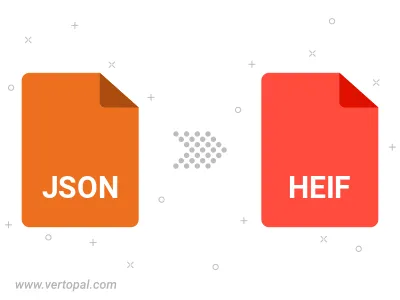Convert JSON to HEIF
Convert JSON documents to HEIF format, edit and optimize documents online and free.

JSON, or JavaScript Object Notation, is a lightweight data interchange format widely used in modern web development for its simplicity and ease of parsing. Originating in the early 2000s, JSON provides a text-based way to represent structured data based on JavaScript object syntax. It has become a standard format for APIs and configuration files, enabling seamless data exchange between servers and web applications due to its human-readable and machine-friendly nature. JSON's adoption has been driven by its ability to facilitate efficient data serialization and deserialization, making it indispensable in the realm of web technologies.
The High Efficiency Image File Format (HEIF) is a modern image format designed for superior compression efficiency and enhanced image quality. Originating in 2015, HEIF was developed by the Moving Picture Experts Group (MPEG) and utilizes the High Efficiency Video Coding (HEVC) codec to store image data. It supports a wide range of multimedia applications, including single images, image sequences, auxiliary image items, and non-image items, making it highly versatile for professional and consumer usage in various devices and platforms. Its ability to maintain high image quality while reducing file size significantly improves storage efficiency and accelerates data transmission.
Click the Choose File button to select the JSON file.
Pick any JSON to HEIF tools if you need to edit your JSON file, then click the Convert button.
Once the convert is complete, you can download the final HEIF file.

Parse attribute-value JSON file and convert it to HEIF with custom delimiter.
To change JSON format to HEIF, upload your JSON file to proceed to the preview page. Use any available tools if you want to edit and manipulate your JSON file. Click on the convert button and wait for the convert to complete. Download the converted HEIF file afterward.
Follow steps below if you have installed Vertopal CLI on your macOS system.
cd to JSON file location or include path to your input file.Follow steps below if you have installed Vertopal CLI on your Windows system.
cd to JSON file location or include path to your input file.Follow steps below if you have installed Vertopal CLI on your Linux system.
cd to JSON file location or include path to your input file.